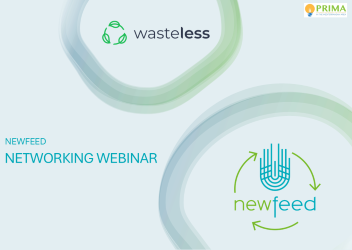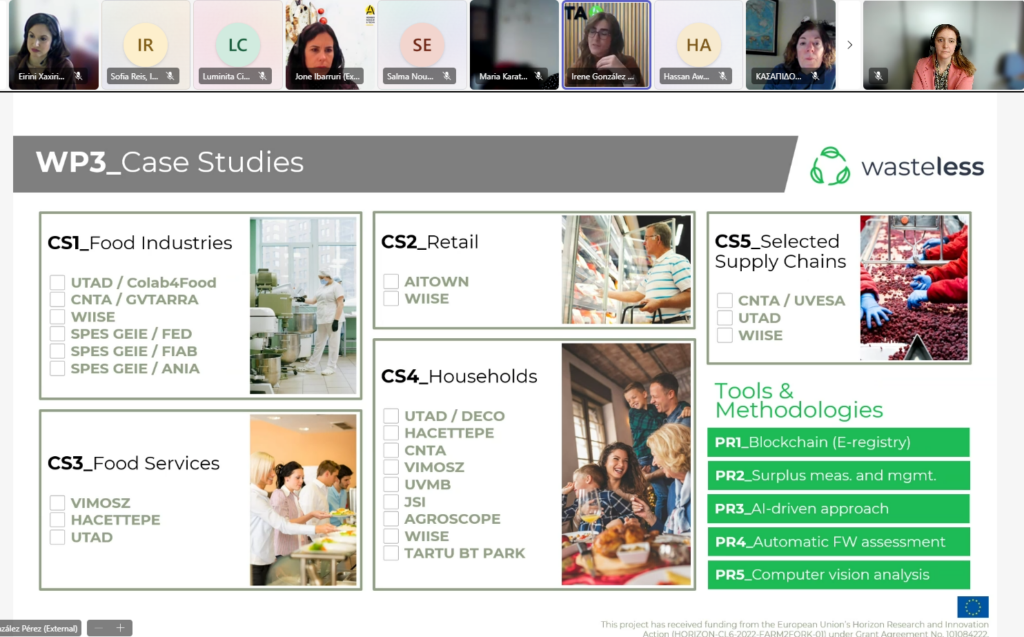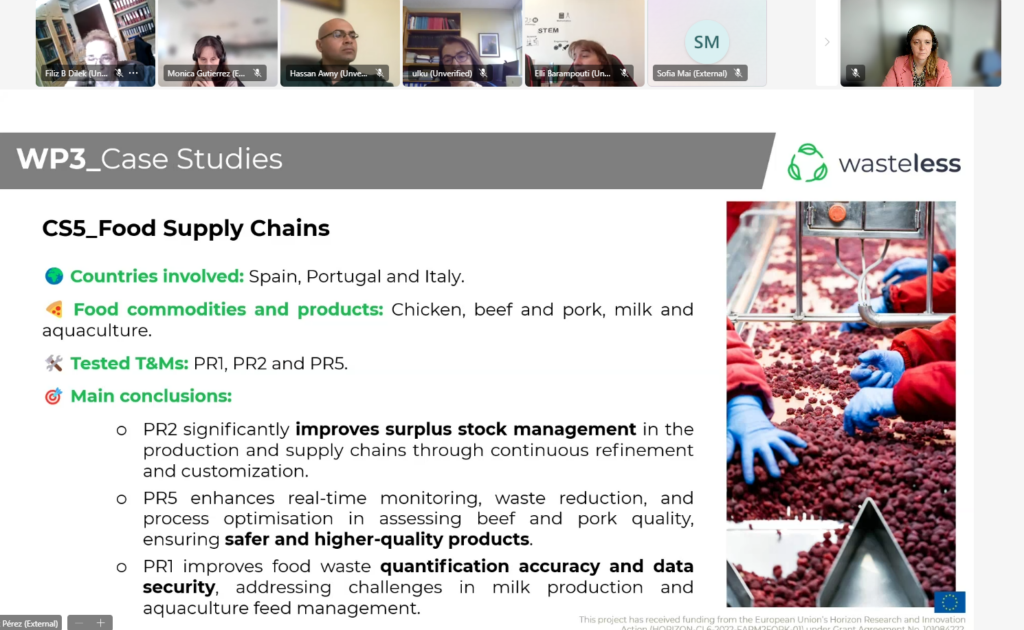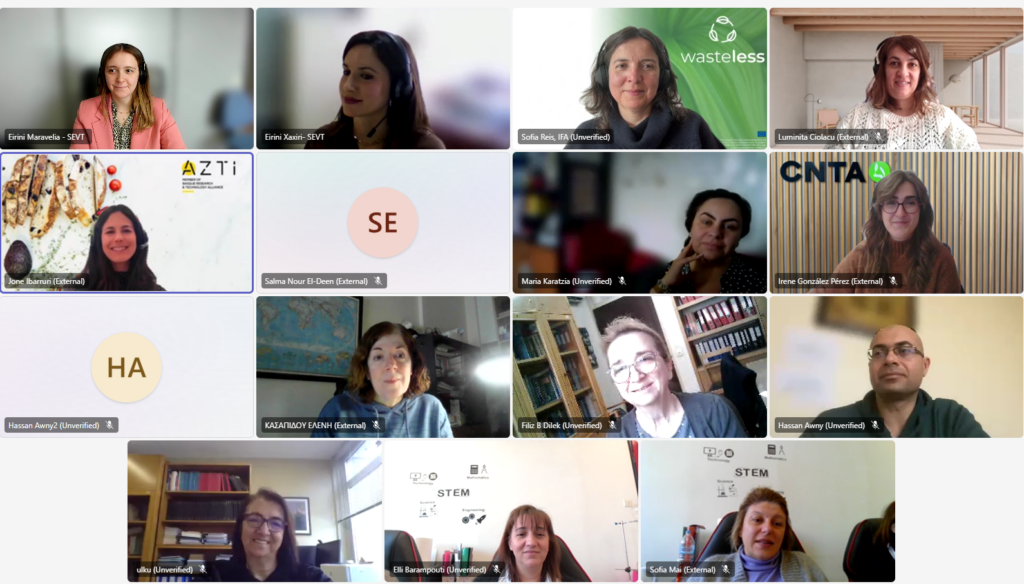
On March 13, NewFeed & WASTELESS projects came together for an insightful Networking Webinar, aiming to tackle food waste reduction and the transformation of agri-food by-products into sustainable animal feed. The event served as a platform for sharing results, innovative tools, and future goals, fostering collaboration between the two EU-funded projects.
Two Projects, One Common Goal
NewFeed Project: Transforming Food Industry By-products into New Feed Ingredients
Focus: Developing alternative animal feed from food waste streams, such as grape stems, orange peels, and olive cake.
WASTELESS Project: Tracking & Reducing Food Waste through Real-World Case Studies
Focus: Developing case studies and methodologies to measure, monitor, and reduce food waste across different sectors of the food supply chain, from food production and retail to households.
Transforming Food Industry by-products into Animal Feed
The first part of the webinar was dedicated to the NewFeed project, coordinated by AZTI, which focuses on transforming agri-food by-products into high-value feed ingredients for livestock and poultry.
Following the project’s introduction, the NewFeed team presented the three case studies, each demonstrating the potential of different food industry by-products to be valorized into sustainable feed:
- Case Study 1 showcased the transformation of grape stems, a waste stream from the wine industry, into a nutritious feed ingredient for dairy sheep and cattle. The process involved optimizing the fiber content and enhancing digestibility through innovative hydrolysis techniques.
- Case Study 2 focused on orange peels, turning citrus waste from juice production into an improved feed ingredient for dairy sheep, enhancing milk quality and reducing methane emissions.
- Case Study 3 presented the successful use of olive cake, a by-product of olive oil production, as a feed ingredient for broiler chickens. Through microbial fermentation, the NewFeed team managed to reduce the high fiber content and improve protein availability, making it suitable for poultry diets.
The NewFeed presentations sparked interest and curiosity from WASTELESS partners, leading to an engaging Q&A session, where topics such as feed efficiency, regulatory approval, and environmental impact were discussed in depth.
Introducing the WASTELESS Project & Its Case Studies
After exploring NewFeed’s innovative feed solutions, the WASTELESS team took the stage, focusing on developing new tools and methodologies to monitor and prevent food waste across different sectors, based o case studies across the value chain.
The WASTELESS project team presented a set of advanced digital tools, including:
- A Blockchain registry.
- A Computer-based Image analysis
- An Artificial intelligence system
- A Surplus M&M tool, and
- A Household automatic measurement system
WASTELESS Case Studies Presented:
- Food Industry: Conducted in Portugal, Spain, Italy, and France, this case study focused on food waste quantification in sectors like fruit & vegetable processing, pasta, olive oil, bakery, cured meat, and dairy. The study highlighted the challenges in data transparency and efficient resource use, showing how improved tracking can support waste reduction strategies.
- Retail Sector: Conducted in Italy, this study explored how supermarkets handle food surplus and waste management. It emphasized the importance of tool customization to accommodate high product diversity in retail environments, making solutions more practical for real-world use.
- Food Services (Canteens & Restaurants): Conducted in Hungary, Turkey, and Portugal, this case study examined food waste management in schools, universities, and workplace cafeterias. The focus was on surplus stock management and transparency, with findings showing that improved tracking can significantly reduce waste in food service operations.
- Households: Conducted in Spain, Slovenia, Hungary, Portugal, Italy, Estonia, and Turkey, this study involved consumer food waste tracking through smart measurement tools. The research found that awareness campaigns and real-time waste tracking can help individuals adopt more sustainable food consumption habits.
- Food Supply Chains (Meat, Dairy, and Aquaculture): Conducted in Spain, Portugal, and Italy, this study focused on reducing food waste in the production of chicken, beef, pork, milk, and aquaculture products. The findings demonstrated how improved waste tracking systems can enhance food safety, quality, and waste reduction in supply chains.
A Collaborative Dialogue for Future Impact
The final part of the event allowed the NewFeed partners to ask questions and provide feedback on the WASTELESS tools, emphasizing the importance of data collection and waste monitoring in the feed industry.
The collaborative atmosphere between the two projects was evident, with both teams expressing interest in future joint actions to combine NewFeed’s expertise in by-product valorization with WASTELESS’s advanced tracking technologies.
Key Takeaways from the Webinar
- NewFeed demonstrated how by-products from the wine, citrus, and olive oil industries can be transformed into high-value feed ingredients.
- WASTELESS presented practical case studies addressing food waste challenges in different sectors, from industry and retail to households.
- The collaboration between the two projects can lead to better tracking of feed efficiency and environmental impact.
- Both projects are committed to advancing circular economy solutions for a more sustainable agri-food system.
Why This Matters for Sustainability
As both projects continue to develop their research and innovations, the potential for scaling up these solutions grows. The goal is not only to provide alternative feed sources but also to help industries across Europe and globally adopt practices that contribute to a more sustainable food system. These efforts directly align with the European Green Deal’s ambitions to reduce waste, cut emissions, and enhance the circular economy.
Looking Ahead
The NewFeed and WASTELESS projects are committed to driving positive change. As the demand for sustainable solutions in agriculture grows, the partnerships forged during this webinar will play a critical role in advancing these projects.
Throughout the webinar, both projects emphasized the importance of collaboration among industry partners, researchers, and innovators. The goal is to create a more resilient and sustainable food system. NewFeed and WASTELESS partners shared their ambitious goals to scale their solutions across Europe and beyond, contributing to a global movement toward sustainable agriculture and circular economies.
Networking and Collaboration Opportunities: Beyond presentations, the webinar also acted as a valuable networking opportunity. Participants had the chance to connect with other professionals in the sustainability, agriculture, and food sectors. This allowed for the sharing of knowledge, expertise, and resources that will be key in advancing the goals of both projects.
Join the Movement
The NewFeed and WASTELESS webinar was an exciting step forward in the journey towards a more sustainable and circular food system. By working together, project partners are shaping the future the agricultural sector.
For more information on the projects networking activities read here.







